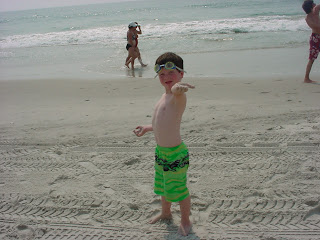
Hello everyone, I wanted to share a few things with any family that had to experience a child or a family member that was struck with Leukemia as well as other types of cancers.
Signs and Symptoms
Two general categories of leukemia are acute and chronic. In acute leukemia, symptoms appear quickly and worsen quickly. This form of leukemia may develop over a short period of days to weeks. Abnormal white blood cells may collect I the brain or spinal cord. The results may be headaches, vomiting, confusion, loss of muscle control and difficulty seeing. Some patients develop sores in the eyes or unusual skin rashes. Leukemia also can affect the lungs and other parts of the body. In chronic leukemia, symptoms may not appear for months or years. Doctors may find chronic leukemia during a routine exam before any symptoms arise. This form of leukemia may develop over periods covering months or years before symptoms are apparent. When symptoms do appear, they tend to be mild and worsen gradually.
Abnormal white blood cells may gradually collect in various parts of the body, affecting areas such as the skin, central nervous system, digestive tract, kidneys and testicles. The two primary types of childhood leukemia are acute lymphocytic leukemia (ALL) and acute myelogenous leukemia (AML). These two acute forms of leukemia can develop over a short period of days to weeks. A third chronic form, chronic myelogenous leukemia (CML), is rare among children.
- Acute Lymphocytic Leukemia (ALL) …..Acute lymphocytic leukemia…..also called lymphoblastic or lymphoid leukemia…..accounts for about 75 percent to 80 percent of childhood leukemia. In this form of the disease, the lymphocytic cells. Which normally fight infection, are affected. When acute lymphocytic leukemia occurs, the bone marrow makes too many lymphocyte cells that do not mature correctly. The lymphocyte cells over produce, crowding out other blood cells. Chromosome abnormalities, or extra chromosomes and structural changes in the chromosome material, are present in the majority of ALL patients.
- Acute Myelogenous Leukemia (AML) …..Acute myelogenous leukemia…..also called granuloctic, myelocytic, myeloblastic or myeloid leukemia…..accounts for about 20 percent of childhood leukemias. Acute myelogenous leukemia is a cancer of the blood in which too many granulocytes, a type of white blood cell that normally fights infection, are produced in the bone marrow and they don’t mature correctly. The immature blood cells or blasts don’t work properly to fight infection. The excessive number of these abnormal cells crowd out other healthy blood cells. Children with certain genetic syndromes, including Fanconi anemia, Bloom syndrome, Kostmann syndrome and Down syndrome, have higher risk of developing AML.
